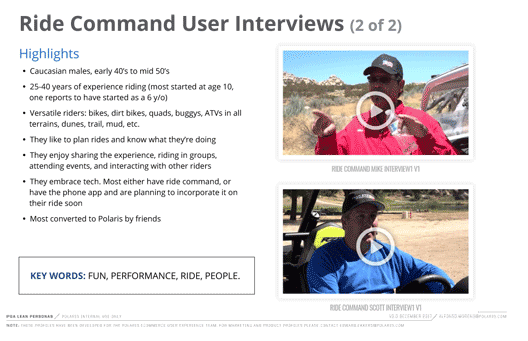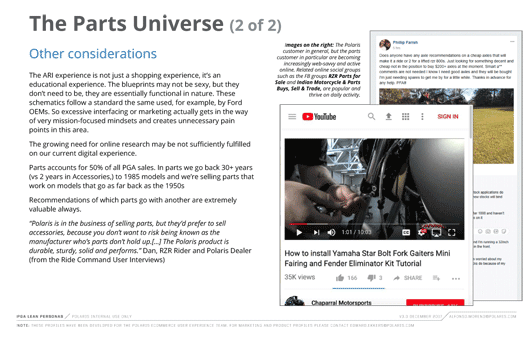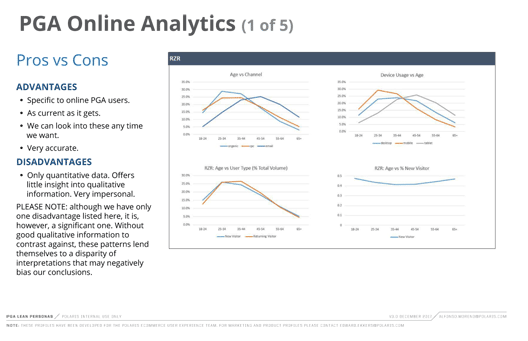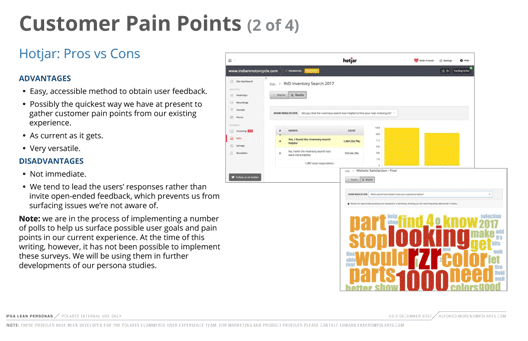Polaris User Personas

Challenge
Up until last year, Polaris had extensive experience using marketing personas but very little of it was applicable to ecommerce and almost none of it was relevant to user experience design. So, when the time came, the product manager and myself set about putting in a few sprints to create as set of lean personas we could use as foundation to an on-going set of user personas with which to reference UX assumptions.
Approach
We decided to play to our strengths. In the spirit of lean personas, there wasn’t much time or budget to actually identify, recruit and interview a set of different Polaris brand customers. What we did have, however, was not just the existing extensive agency-conducted marketing studies but also a wealth of online metrics including user surveys, online user session recordings and social media analytics. The Ride Command team had just produced a number of valuable video interviews with actual riders during Camp RZR and our customer service hotline personnel was, unsurprisingly, alive with stories on our customers pain and frustration points.
Results
What we discovered about the Polaris customer at the time rocked many of the internal assumptions perpetuated within the company, but confirmed much of what we knew would happen if we explored our customers’ mental models within the context of ecommerce activity. Age, gender, culture, education or familiarity with technology all varied, sometimes significantly, depending on product, category vertical or brand, more so than previously assumed, but also evolved over time as much as the company’s offerings did. This laid the foundation for an ongoing approach to live persona understanding positively impacting Polaris’ user experience work going forward.
WHAT
User Personas
(UX researcher, gathering and distilling data from other groups)
WHO
Polaris Industries
WHEN
2017
the data
After much detective work and internal networking, I unearthed a wealth of data from all of the different departments, some had been shared, much forgotten or overlooked. All of it helped us better understand our users, and build with their needs in mind. It positively impacted the way we met our business goals and helped bring focus to many of our key performance indicators.
 lfonso moreno
lfonso moreno






